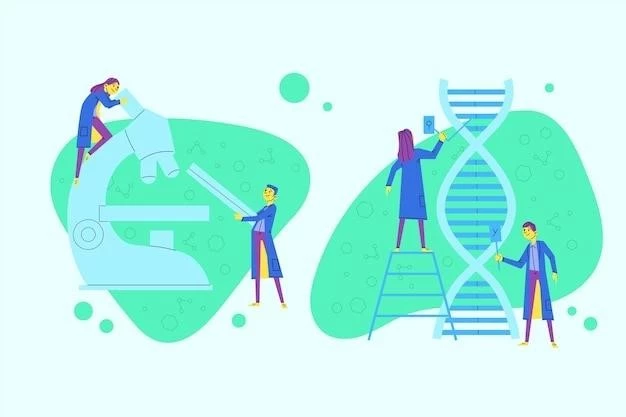Cleft palate can occur due to genetic factors, environmental influences, or a combination of both, affecting proper facial development.

Causes of Cleft Palate
Multiple factors contribute to cleft palate, including genetic mutations, environmental exposures (such as maternal smoking or certain medications during pregnancy), and nutritional deficiencies. Changes in specific genes involved in facial development can lead to incomplete fusion of the palate during embryonic growth.
Additionally, certain syndromes and chromosomal abnormalities are associated with an increased risk of cleft palate. Understanding the complex interplay of genetic predisposition and external influences is crucial in determining the underlying causes of this condition.
Treatment Options for Cleft Palate
The treatment for cleft palate typically involves a multidisciplinary approach that may include surgical repair, speech therapy, orthodontic treatment, and ongoing medical monitoring. Surgical intervention to close the gap in the palate is often performed within the first year of life to support proper feeding and speech development.
Speech therapy plays a significant role in helping individuals with cleft palate improve their communication skills by addressing any speech difficulties that may arise. Orthodontic treatment may be necessary to correct dental issues that can result from the cleft palate.
Regular follow-up visits with a healthcare team specialized in cleft palate care are important to monitor progress and address any complications that may arise throughout childhood and adolescence.
Cardiac defects in children refer to abnormalities in the structure or function of the heart present at birth, affecting heart health and overall well-being.
Understanding Cardiac Defects in Children
Cardiac defects in children encompass a wide range of conditions affecting the heart’s structure and function from birth. These abnormalities can involve the heart chambers, valves, or blood vessels, leading to impaired blood flow, irregular heart rhythms, or other complications.
Some common types of cardiac defects include atrial septal defects, ventricular septal defects, tetralogy of Fallot, and congenital heart valve abnormalities. These conditions can vary in severity, with some requiring immediate intervention after birth, while others may be asymptomatic until later in life.
Understanding the specific type of cardiac defect present in a child is crucial for determining the appropriate management strategy, which may include medication, surgical procedures, catheter-based interventions, or ongoing medical monitoring to support the child’s cardiac health and overall well-being.
Surgical Interventions for Cardiac Defects
Surgical interventions for cardiac defects in children play a crucial role in correcting structural abnormalities of the heart and improving overall cardiac function. Procedures such as open-heart surgery, catheter-based interventions, and heart valve repair or replacement may be performed to address specific cardiac conditions.
During open-heart surgery, a cardiothoracic surgeon accesses the heart through an incision in the chest to repair defects such as septal defects, valve abnormalities, or complex congenital heart malformations.
Catheter-based procedures involve inserting a thin tube called a catheter into a blood vessel, guiding it to the heart, and using specialized tools to repair certain defects without the need for open-heart surgery.
Individualized surgical plans are developed based on the child’s specific cardiac condition, overall health, and treatment goals, with the aim of improving heart function, reducing symptoms, and enhancing long-term outcomes for pediatric patients with cardiac defects.
Ectrodactyly, also known as split hand and split foot malformation, is a rare congenital condition characterized by missing central fingers or toes.
Understanding Ectrodactyly
Ectrodactyly, a rare congenital anomaly, manifests as a split in the hand or foot, often resulting in the absence of central digits. This condition, also known as split hand and split foot malformation, can vary in severity and may impact both the structure and function of the affected limb. Ectrodactyly is typically caused by genetic mutations that disrupt normal limb development during embryogenesis.
The exact genetic mechanisms underlying ectrodactyly involve alterations in genes responsible for limb formation and patterning. In some cases, ectrodactyly may occur as part of a genetic syndrome or be inherited in a familial pattern. Understanding the genetic basis of ectrodactyly is essential for accurate diagnosis, counseling, and potential treatment options.
Genetic Factors in Ectrodactyly
Ectrodactyly, a congenital limb anomaly, is primarily attributed to genetic factors that influence limb development. Mutations in certain genes, such as the p63 gene, have been associated with ectrodactyly, impacting the signaling pathways involved in limb formation.
These genetic alterations can disrupt the intricate process of limb bud growth and differentiation during embryonic development, leading to the characteristic split-hand or split-foot malformation observed in individuals with ectrodactyly. Inherited in an autosomal dominant or autosomal recessive manner, the genetic basis of ectrodactyly underscores the importance of genetic counseling and testing in affected families.
Further research into the specific genes and pathways involved in ectrodactyly is crucial for advancing our understanding of this condition and developing potential targeted interventions or treatment strategies aimed at addressing the underlying genetic mechanisms responsible for ectrodactyly.
Specialized rehabilitation programs offer comprehensive support to enhance function and quality of life for individuals with ectrodactyly.
Rehabilitation for Ectrodactyly Patients
Rehabilitation programs tailored for individuals with ectrodactyly focus on improving hand and foot function, enhancing independence, and addressing any challenges related to daily activities. Occupational therapy plays a key role in teaching adaptive techniques and providing specialized tools to maximize limb functionality.
Physical therapy aims to strengthen muscles, improve coordination, and enhance mobility, helping individuals with ectrodactyly achieve optimal physical function. Prosthetic devices and orthotic interventions may be recommended to support limb alignment, assist with balance, or improve the cosmetic appearance of the affected limb.
Psychological support is also integral in rehabilitation, offering emotional assistance, coping strategies, and fostering self-acceptance and confidence. A multidisciplinary approach that includes healthcare professionals, therapists, and support networks is essential in creating a comprehensive rehabilitation plan that addresses the diverse needs of individuals with ectrodactyly.
Support Groups for Individuals with Ectrodactyly
Support groups play a vital role in providing individuals with ectrodactyly a sense of community, understanding, and encouragement. These groups offer a platform for sharing experiences, emotional support, and practical advice on coping with the challenges associated with ectrodactyly.
By connecting with peers who also have ectrodactyly, individuals can gain insights, build self-confidence, and foster a positive self-image. Support groups often organize events, workshops, and online forums to facilitate communication, education, and networking among members.
Furthermore, support groups serve as advocacy platforms, raising awareness about ectrodactyly, promoting inclusion, and advocating for the rights and needs of individuals with limb differences. Participation in support groups can empower individuals with ectrodactyly to navigate societal perceptions, overcome obstacles, and embrace their unique abilities and strengths;
